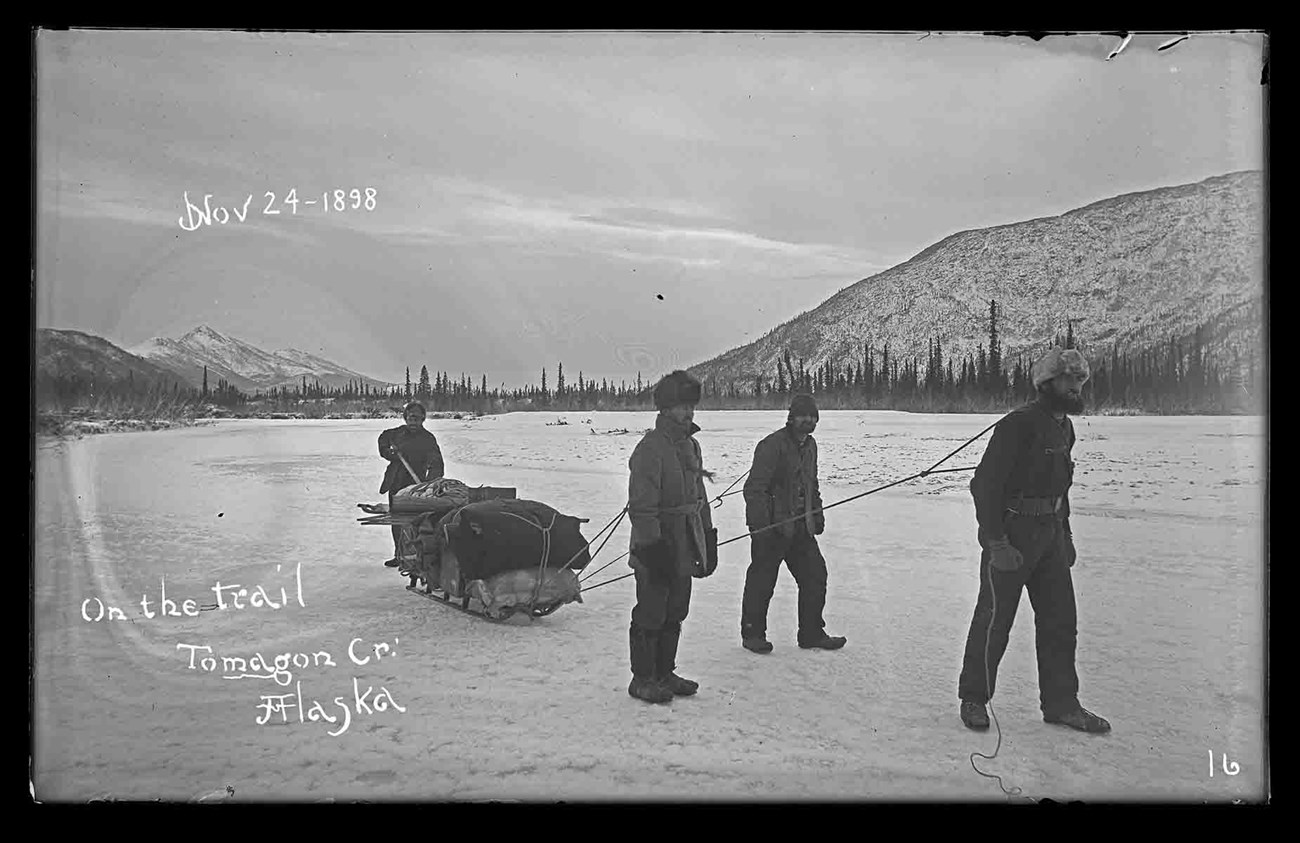
Anchorage Museum, Jasper N. Wyman Collection (B1989.24.93).
Although the Brooks Range was well known to the Inupiaq and Athabascan peoples who trekked through the region in pursuit of fish and game, the mountains remained unknown to outsiders until the last decades of the 1800s. Long after the United States purchased Alaska from Russia in 1867, the Brooks Range remained a blank spot on cartographers' maps. During the 1880s, however, officials in the United States government felt the need to map northern Alaska, if only to know more about the vast territory under their jurisdiction. Military expeditions occurred between 1883 and 1886. In 1898, the U.S. Geological Survey announced a systematic topographic and geologic survey of Alaska and exploration of the Brooks Range. Between 1899 and 1911, six major reconnaissance expeditions traversed the mountain range, mapping its topography and geology and defining the patterns of economic geology so important to prospectors and miners. [Learn more about the history of exploration in the Brooks Range in Arctic Citadel.]
These early journeys into the Brooks Range and Arctic Alaska opened the region to the outside world, to the prospectors spilling out of the Klondike in search of new gold fields and to still more map-makers. Even so, the remote Brooks Range with its ice-choked rivers and wind-blown mountain peaks seemed to offer little to an industrialized America. The people living on the land were widely dispersed, most towns sprang up only to fade away, and the land remained largely unaltered – that is, until the arrival of the airplane closed the distances and the discovery of oil on the North Slope attracted the world’s attention.
Gold Rush
The Nome Gold Rush of 1898 brought an influx of people to the Seward Peninsula. They came to make their fortune mining for gold. At first, the gold miners were content to stay relatively close to the city of Nome. However, as more and more miners arrived, sometimes bringing wives and children, the area around the city quickly became overcrowded, forcing the miners to explore further afield for better prospects. This soon brought miners into what is now Bering Land Bridge National Preserve.
Whaling
In the late 19th and 20th centuries, over 2,000 whaling voyages set out from New Bedford, Massachusetts, bound for the bowhead whaling grounds off Alaska's Arctic coast. The voyage of over 20,000 miles took the whalers to the Azore islands off the coast of Africa, around Cape Horn, the southernmost tip of South America, to the Hawaiian islands and finally, to the Bering Sea and Arctic Ocean.
Commercial whaling had profound cultural, human health, and ecological effects on Alaska. Whale hunting was practiced by native people on both sides of the Bering Strait long before the arrival of commercial whaling. So when commercial whaling voyages originating from the U.S. east coast arrived in the Arctic, local people were hired as crew and hunters, and helped provision and rescue stranded whalemen.It devastated the bowhead whale population. Within this century, this part of the world saw drastic change to the way things were. It is estimated that before commercial whaling, there were 30,000 bowhead whales in the Bering Sea. By the end of this phase, it was estimated that only 10,000 bowhead whales remained (estimates are found in Whales, Ice, and Men by John R. Bockstoce, 1978). Alaska Natives saw a depletion of their wild and natural food and a cash economy was introduced.
Last updated: January 9, 2020
